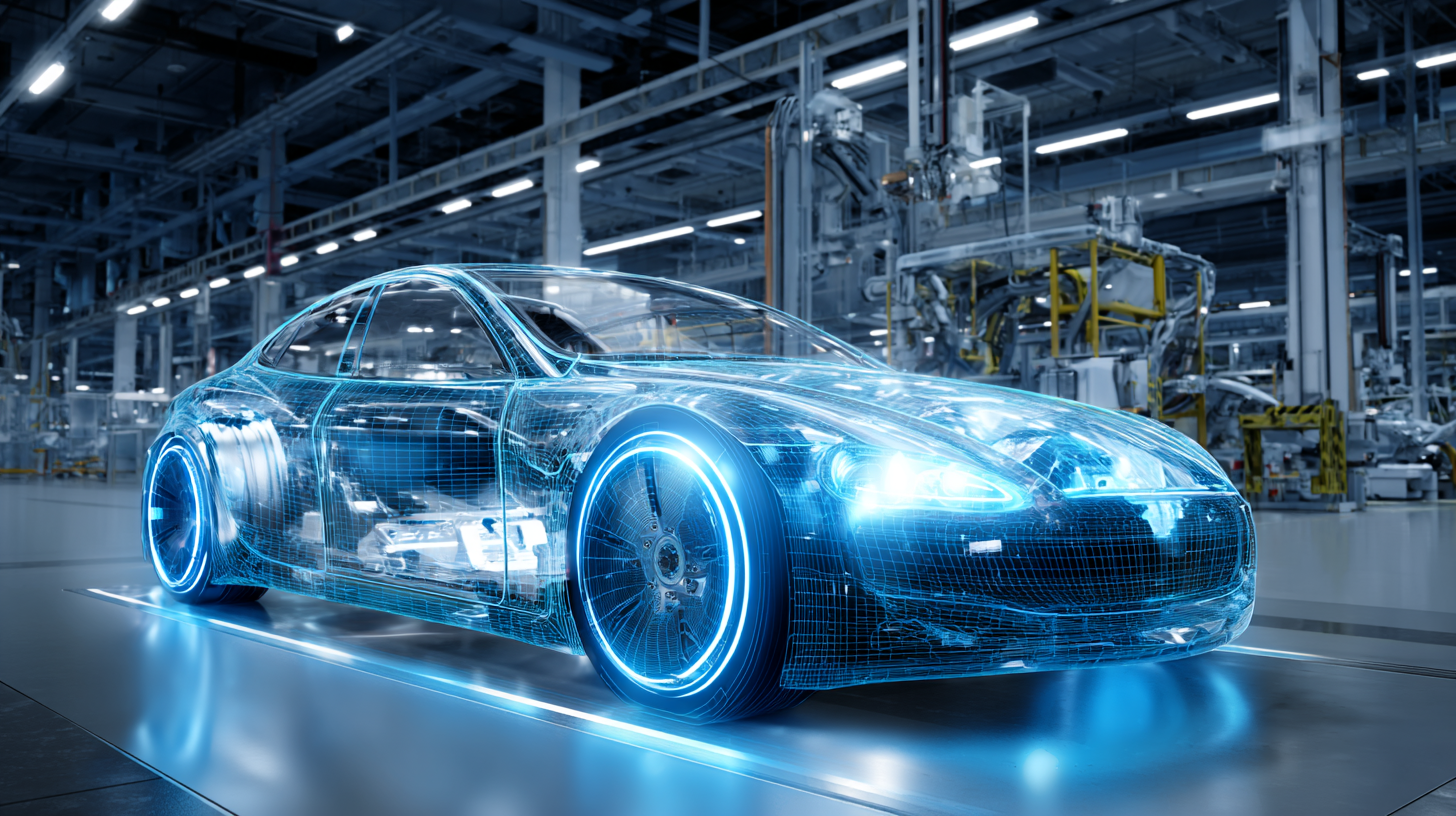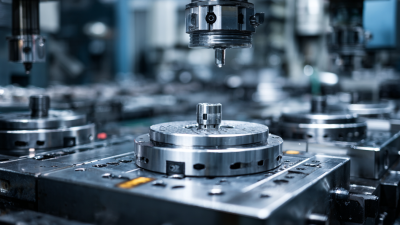The automotive industry is on the brink of a transformative wave, propelled by innovative advancements that are reshaping the landscape of automotive car parts. As outlined in the 2023 Global Automotive Parts Market Report, the industry is expected to grow significantly, reaching an estimated market value of $1 trillion by 2026. This growth is driven by the increased integration of smart technologies, such as IoT and AI, which enhance the functionality and efficiency of automotive car parts. Additionally, sustainability initiatives and the rising demand for electric vehicles are pushing manufacturers to innovate materials and production processes. As we delve into the future of automotive car parts, exploring these innovations will be crucial for stakeholders aiming to stay ahead in a rapidly evolving market.

The automotive industry is on the brink of a revolution, and one of the most transformative innovations leading this change is 3D printing. This technology has the potential to disrupt traditional manufacturing processes by enabling the production of custom automotive parts that are tailored to specific needs. By utilizing 3D printing, manufacturers can create complex geometries and lightweight components that would be impossible or prohibitively expensive to achieve through conventional methods. This flexibility not only enhances performance but also allows for rapid prototyping, significantly reducing the time from design to production.
Moreover, leveraging 3D printing for automotive parts production can lead to substantial cost savings. Manufacturers can minimize waste by using only the material necessary for production, resulting in a more sustainable process. Additionally, on-demand manufacturing means that spare parts can be produced precisely when needed, reducing inventory costs and storage space. As the technology continues to advance, we can expect to see a significant shift in how car manufacturers approach design and production, paving the way for a new era of customized, efficient, and environmentally-friendly automotive solutions.
| Dimension | Current Technology | Future Innovations | Impact on Industry |
|---|---|---|---|
| Manufacturing Process | Traditional CNC Machining | 3D Printing | Reduced production time and costs |
| Material Usage | Aluminum and Steel | Composite and Lightweight Materials | Improved fuel efficiency and vehicle performance |
| Customization | Limited Options | On-demand Custom Parts | Enhanced customer satisfaction and personalization |
| Supply Chain | Global Sourcing | Local Production Facilities | Reduced lead times and carbon footprint |
| Prototyping | Time-consuming Traditional Methods | Rapid Prototyping using 3D Printing | Faster time to market for new designs |
As the automotive industry evolves, integrating AI and machine learning into manufacturing processes has become a cornerstone of innovation. These technologies enable manufacturers to streamline operations, reduce waste, and enhance product quality. By employing predictive analytics, companies can anticipate machinery failures before they occur, minimizing downtime and optimizing maintenance schedules. This proactive approach not only saves costs but also boosts overall efficiency.
**Tips:** Consider starting with small pilot projects that incorporate AI tools. This allows manufacturers to measure outcomes and progressively scale successful integrations without overwhelming existing systems. Training the workforce to understand and utilize AI applications is crucial; a tech-savvy team can effectively leverage data-driven insights to make informed decisions.
Additionally, utilizing AI in supply chain management can enhance responsiveness to market demands. Machine learning algorithms can analyze consumer trends and adjust production schedules accordingly, ensuring that inventory levels align with actual demand. This adaptability is vital in a fast-paced industry where consumer preferences can shift rapidly.
**Tips:** Regularly assess data sources and ensure that the AI systems are trained on relevant, high-quality datasets for accurate predictions. Collaborating with tech partners or startups specializing in AI can also provide fresh perspectives and innovative solutions tailored for automotive manufacturing.
The automotive industry is undergoing significant transformation with the integration of advanced sensor technologies aimed at enhancing vehicle safety. One of the most pivotal innovations is the implementation of Anti-lock Braking Systems (ABS) in two-wheeled vehicles. The global market for ABS is projected to escalate from $17.8 billion in 2025 to an impressive $42.3 billion by 2032, translating to a compound annual growth rate (CAGR) of 13.1%. This remarkable growth underscores the demand for safety-enhancing technologies that prevent wheel lock during braking, thus maintaining steering control and stability.
Additionally, the rising prominence of pressure sensors, particularly film pressure sensors, plays a crucial role in vehicle safety systems. The market is expected to grow from $220.2 million in 2024 to $356.2 million by 2032, showcasing a CAGR of 6.2%. These sensors are essential for monitoring tire pressure and various other vehicle metrics, contributing to proactive safety measures. Furthermore, the automotive ultrasonic radar market is anticipated to reach $649.29 million by 2025, with a robust CAGR of 7.9% until 2033. This technology enhances features such as collision avoidance, thereby improving both safety and driver assistance capabilities in modern vehicles.
The automotive industry is undergoing a significant transformation as manufacturers increasingly recognize the importance of sustainability in car part design and production. Utilizing sustainable materials not only reduces environmental impact but also addresses the growing consumer demand for eco-friendly vehicles. Innovations in biodegradable composites, recycled plastics, and natural fibers are paving the way for revolutionary changes in how automotive parts are conceived and produced.
One promising direction is the incorporation of bio-based materials, such as hemp or flax fibers, which offer high strength-to-weight ratios while minimizing the carbon footprint. Additionally, advancements in processing techniques enable these materials to be more easily integrated into existing production methods. Alongside this, the use of recycled metals and plastics helps to conserve natural resources and reduce waste, establishing a circular economy within the automotive sector. As these sustainable materials gain traction, they are poised to redefine not only the design aesthetics of vehicles but also their overall performance and sustainability.

The future of automotive car parts, especially in the electric vehicle sector, is poised for significant transformation. As consumer demand for electric vehicles (EVs) surges, components like battery boxes have emerged as critical areas of innovation. The market for battery boxes alone is projected to grow from $1,953.02 million in 2023 to an impressive $2,533.07 million by 2024, eventually surging to $18,767.62 million by 2032. This rapid growth reflects a compound annual growth rate (CAGR) of 29.7%, underscoring the importance of adapting to changing technologies and consumer needs.

In addition to battery technology, the automotive parts market is evolving across various vehicle types and applications, including interior and exterior accessories. Anticipating trends in materials, design, and functionality will be crucial for manufacturers looking to stay competitive. The focus will likely shift toward more sustainable manufacturing practices and the integration of smart technologies in components, further enhancing the user experience and vehicle efficiency. As the automotive landscape evolves, stakeholders must remain vigilant in monitoring these emerging trends to effectively predict future demands in electric vehicle components and accessories.






